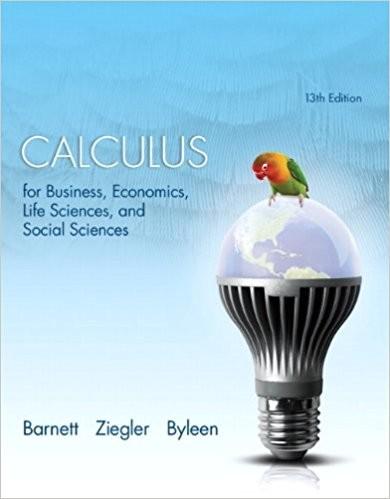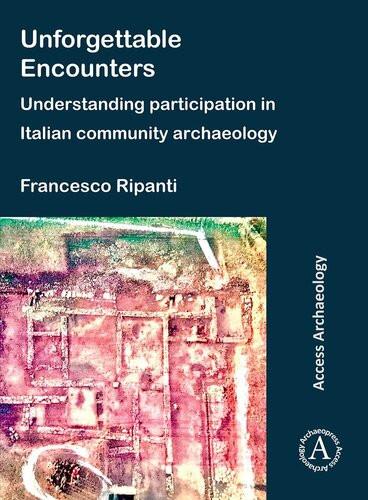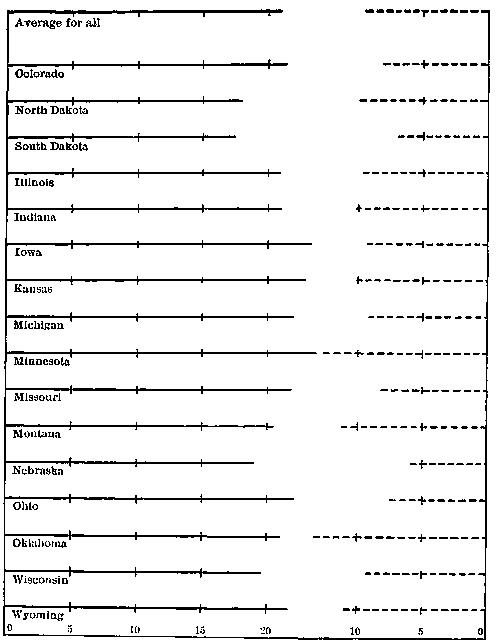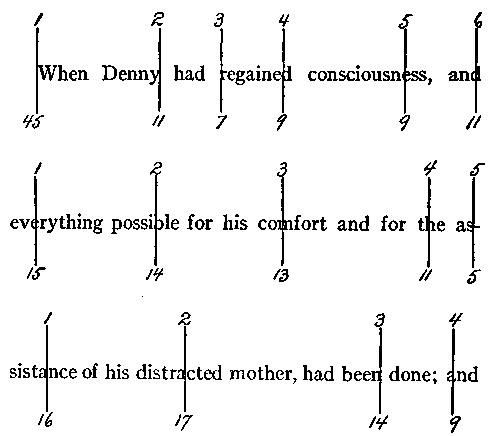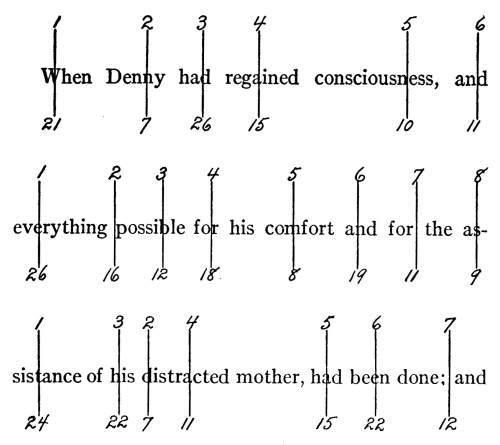Unforgettable Heroes Unforgettable Passion Box Set Unforgettables 02 Donna Fasano Patrice
Wilton Mona Risk Mimi Barbour Traci Hall Susan
Jean Ricci Leanne Banks download
https://ebookbell.com/product/unforgettable-heroes-unforgettablepassion-box-set-unforgettables-02-donna-fasano-patrice-wiltonmona-risk-mimi-barbour-traci-hall-susan-jean-ricci-leannebanks-33666888
Explore and download
Here are some recommended products that we believe you will be interested in. You can click the link to download.
Unforgettable Heroes Unforgettable Passion Box Set Unforgettables 02
Donna Fasano Patrice Wilton Mona Risk Mimi Barbour Traci Hall Susan Jean Ricci Leanne Banks
https://ebookbell.com/product/unforgettable-heroes-unforgettablepassion-box-set-unforgettables-02-donna-fasano-patrice-wilton-monarisk-mimi-barbour-traci-hall-susan-jean-ricci-leanne-banks-33666890
Unforgettable Heroes Unforgettable Passion The Unforgettables Book 2
Donna Fasano Patrice Wilton Mona Risk Mimi Barbour Traci Hall Susan Jean Ricci Leanne Banks Fasano
https://ebookbell.com/product/unforgettable-heroes-unforgettablepassion-the-unforgettables-book-2-donna-fasano-patrice-wilton-monarisk-mimi-barbour-traci-hall-susan-jean-ricci-leanne-banksfasano-32816790
Unforgettable Heroes Denman Amie Terry Bobbye James Maddie Shaffer Cat
https://ebookbell.com/product/unforgettable-heroes-denman-amie-terrybobbye-james-maddie-shaffer-cat-7746802
Unforgettable Heroes Ii Boxed Set Bevarly Elizabeth
https://ebookbell.com/product/unforgettable-heroes-ii-boxed-setbevarly-elizabeth-61588718
Unforgettable Romances Unforgettable Heroes The Unforgettables Book 1
Mimi Barbour Traci Hall Patrice Wilton Mona Risk Leanne Banks Donna Fasano Barbour
https://ebookbell.com/product/unforgettable-romances-unforgettableheroes-the-unforgettables-book-1-mimi-barbour-traci-hall-patricewilton-mona-risk-leanne-banks-donna-fasano-barbour-32816742
Unforgettable Romances Unforgettable Heroes Mimi Barbour Traci Hall Patrice Wilton Mona Risk Leanne Banks Donna Fasano
https://ebookbell.com/product/unforgettable-romances-unforgettableheroes-mimi-barbour-traci-hall-patrice-wilton-mona-risk-leanne-banksdonna-fasano-33119546
Unforgettable Heroes Ii Boxed Set Bevarly Elizabeth James Maddie Ethridge Margaret Eaves Janet
https://ebookbell.com/product/unforgettable-heroes-ii-boxed-setbevarly-elizabeth-james-maddie-ethridge-margaret-eaves-janet-9156722
Unforgettable 1st Julie Ortolon
https://ebookbell.com/product/unforgettable-1st-julie-ortolon-48249714
Unforgettable Encounters Understanding Participation In Italian Community Archaeology Francesco Ripanti
https://ebookbell.com/product/unforgettable-encounters-understandingparticipation-in-italian-community-archaeology-francescoripanti-50202412
A
STUDY OF THE RELATION OF EDUCATION TO GENERAL SOCIAL LIFE
A fourth and final example can be borrowed from studies made in the city of Minneapolis of the opportunities for trade training in that city, of the number of workmen needed in each of the trades, and of the kind of preparation required for efficiency in each branch of labor. An industrial and educational survey of the community was undertaken for the specific purpose of adapting educational organization to the practical needs of the community.6 Such a study recognizes the fact that the school is but one among many social institutions and that the school must find its proper place in community life through a thorough scientific study of other more general social activities.
THE SCIENTIFIC STUDY OF EDUCATIONAL PROBLEMS
Here, again, it is by no means asserted that the solution of the problem of training workers for the industries has been found. It can, however, be stated with complete assurance that both the school and the community will proceed with greater intelligence if the facts are carefully canvassed in advance.
The spirit of patient, detailed scientific study is more and more dominating the schools. There are some who, impatient at the labor involved in such studies, would rush forward to radical experimentation. Fortunately, even such rash reformers are becoming convinced that they need to keep records of their results in order to prove the success of the changes which they have made. As a result, they too are taking on some of the forms of science, though they do not adopt the full program of patient study of conditions.
The result of a scientific movement such as is under way in education will be the cultivation of a broader conception than was
ever possible from any individual point of view. The pupil’s view is narrow because he comes in contact with the school only at the point of application of educational methods to his own life. The scientific view of education is broad because it places the school in its proper relations to other social activities, because it defines the relation of the pupils and teachers to one another and to the material used for instruction, and because it opens up all the results of school work to full inspection and evaluation. This broad scientific view is the one which the teacher and the community at large should adopt.
EXERCISES AND READINGS
In every school certain changes are introduced from time to time in spite of the conservatism of the community. Let the student find examples of (1) new courses of study, (2) new methods of appointing or promoting teachers, or (3) new forms of organization, such as the junior high school or departmental teaching. After discovering innovations, let him find how they were brought about.
What are the usual forms of school records and reports known to the student? How could records be made of more value? Suggest methods of presenting the facts of daily attendance so that they can be readily interpreted by a community. What are some of the interpretations that ought to be put on failures and nonpromotions in different kinds of cases? Is repetition of a course desirable for a pupil who has failed? Are failures more common in required courses than in elective courses? When a required course is described as essential to the education of everyone, what is meant?
Let the student test his own rates of reading. How should a college class differ from a high-school class in ability to read? Go to a library or study-room and watch the people read. Report the differences between individuals.
The readings which are most stimulating to students who have never faced the problems of school organization are those which call
in question present school practices.
DEWEY, JOHN. The School and Society. The University of Chicago Press. This is one of the most stimulating demands for a reorganization of the school which has ever been written.
ROUSSEAU, JEAN JACQUES. Émile. D. Appleton and Company. This is a book of great historical significance. It is an indictment of formalism in education and a vigorous advocacy of naturalism.
SPENCER, HERBERT. Essays on Education. D. Appleton and Company. This is a demand for a thorough reform of the school curriculum. It is now nearly sixty years old, but it is modern in its spirit.
CHAPTER II SCHOOLS OF OTHER COUNTRIES AND OF OTHER TIMES
THE COMPARATIVE AND HISTORICAL METHODS
The scientific methods of studying school problems, which were illustrated in the last chapter, can be supported and supplemented by a comparison of the schools of the present with the institutions of earlier times, and by a comparison of the schools of different countries with one another. Such comparisons seldom serve as an adequate basis for the reorganization of school practices, because the conditions in one generation and in one country are so unlike those of others that direct transfer of methods of procedure is dangerous. Comparison serves, however, to set in clear perspective the characteristics which distinguish each situation from every other. If an American wishes to see the school system with which he is familiar from a new point of view, the comparative method furnishes a kind of outside station from which he may look back and see facts which were by no means clear in their meaning when viewed from near at hand.
THE AMERICAN TEXTBOOK METHOD OF TEACHING
One very impressive difference between the schools of the United States and the schools of Europe is to be found in the fact that class exercises in our schools are commonly based on assignments in textbooks, while in Europe the chief method of instruction is oral exposition by the teacher. The word “recitation,” which is often employed in describing a classroom exercise, is an American term. It originated at the period when devotion to the textbook was even greater than it is now,—when the pupil was expected to repeat
verbatim the passage from the text. In British books on education the word “recitation” appears only when referring to American practices, and usually takes the form “the American recitation.” In the German educational vocabulary the word has no equivalent.
The unique American method of reciting lessons learned out of a book can be contrasted with the European method by taking a concrete case. If one goes into a geography class in a German school, one finds in the hands of the pupils no book, except that in the schools for the richer classes there may be an atlas; commonly the wall map serves. The teacher lectures on some section of the country, and follows the lecture by questions which the pupils answer. The advantages of the European method are that the pupils become trained, attentive listeners, and are able in answering questions to talk coherently for long periods, imitating the continuous discourse of the teacher. The disadvantages are that the information supplied is limited by the individual teacher’s training, and the pupils cultivate little or no independence in the collection and sifting of information. The influence of the teacher is always dominant—often oppressively so.
INDEPENDENCE OF THOUGHT BASED ON READING
The contrast here pointed out is one of fundamental importance. It can be adequately understood by a study of the history of American schools. When the colonists came to New England they were bent on securing for every individual independent personal contact with the truth. They had left their European homes because there dominating authority always stood between the individual and the sources of truth. One of the first acts of the colonists, therefore, was to provide for the training of every boy and girl in that power which would make him or her independent, especially in religion. The early legislation shows unequivocally this motive. Thus in 1650 Connecticut passed a law which had a preamble very much like that of the Massachusetts law of 1647. The preamble is as follows:
It being one chief project of that old deluder, Satan, to keep men from a knowledge of the Scriptures, as in former times, keeping them in an unknown tongue, so in these latter times, by persuading them from the use of tongues, so that at least, the true sense and meaning of the original might be clouded by false glosses of saint-seeming deceivers; and that learning may not be buried in the grave of our forefathers [the court decreed that whenever a township increased to fifty householders they should employ someone] to teach all such children as shall resort to him, to write and read.
So strictly did the early schools devote themselves to reading that arithmetic and, in some cases, even writing were neglected in the exclusive cultivation of the one art of reading. Later generations of American teachers and pupils have experienced a great expansion of the content of the course of study, but the method of instruction has always been predominantly the reading method. The large number of supplementary readers used in history, in geography, and in nature study keep up the traditions of a school which was from the first a reading school.
The social consequences of this emphasis on reading can be seen in the fact that public opinion in America is controlled largely by an appeal to the people through reading matter. The importance of this kind of public opinion can hardly be overemphasized. In a democracy there must be ability to form independent opinions, and this is possible only where there is the widest training in reading.
EUROPEAN SCHOOLS CASTE SCHOOLS, AMERICAN SCHOOLS
TRULY PUBLIC
A second characteristic of the school system of the United States which distinguishes it from the systems of Europe is described by the phrase, coined in England, “the educational ladder.” There is no limit in the American system to the possibility offered the individual pupil
of going on to higher institutions. The boy or girl who has completed the elementary course can go on to the high school and from the high school to the college and university. This is not true anywhere in Europe. There the school systems are sharply divided into two wholly different and distinct lines of advancement. The children of the common people go to one school; the children of the aristocracy and richer classes go to a different school. The school for the common people is limited in time and opportunity, and does not lead into the universities. Thus the Volksschule of Germany, which gave instruction before the war to 92 per cent of the total school population, is an eight-year school, teaching only the common branches. The pupil who enters the Volksschulecannot look forward to entering any one of the professions or any civil-service position. He cannot be transferred from the upper grades of this common school into the secondary school. The common school of Germany is a social instrument for the perpetuation of a caste system. The common people know their place because they learn it when they enter school.

The subdivisions of the lines indicate a year in each case. Certain of the important items of the curriculum are set down under the years in which they are first introduced
FIG. 3. Diagram showing the organization of German schools and American schools
The European school for the aristocracy, on the other hand, is organized from its earliest years with a view to preparing its pupils for the higher callings. It is difficult for the American to understand how distinct this school is from the common school. The term “secondary school” is sometimes applied in educational writings to both the high school of the United States and the aristocratic schools of Europe. But the secondary school of Europe is entirely different from our high school. It takes little children in the lower grades and carries them through. Thus the German Gymnasium takes boys of the age of six. These are received into what is called a Vorschule, or preliminary school. After three years in the preliminary school the pupil begins his nine-year course in preparation for the university. In some of the states of the German Empire the pupil may be transferred into the Gymnasium from the earliest grades of the common school, but from this point on there is no commerce whatsoever, in teaching staff, in course of study, or in pupil constituency, between the common school and the school of the aristocracy. The division in France is quite as strict. In England transfer in the later years of the common-school course can be made, but only on the basis of examinations.
The social consequences of such a division within the school system need no detailed exposition. The hard-and-fast lines of caste are drawn very deep in any country where the boys and girls are marked from the beginning of their training by separation in opportunity.
INFLUENCE OF EUROPEAN SCHOOLS ON THE EDUCATIONAL SYSTEM OF THIS COUNTRY
It is not enough that we should see this contrast, however; we must learn its fuller meaning by looking into the history of our own school system. The fact is that we have not broken entirely away from the traditions of Europe. Our elementary school was borrowed directly from the Volksschule of Germany, and many of the
readjustments which we are making to-day are nothing less than efforts to shake ourselves free from that disjointed scheme of education.
The time of this borrowing of the German Volksschule is clearly marked in our history. In the first three decades of the nineteenth century American schools were at a low level of development. A vivid picture of conditions in 1801 can be given by quoting from one of the earliest school reports that we have. The superintendent of the city of Taunton, Massachusetts, in a recent report reproduced this interesting historical document, of which we may quote certain sections in order to show the kind of school organization which prevailed at that date.
REPORT OF THE VISITING COMMITTEE OF TAUNTON IN 1801
The committee chosen by the town to inspect the schools beg leave to report their situation and examination....
January 6th, 1801. Your committee visited a school kept in Rueben Richmond’s house instructed by Mrs. Nabby Williams of 32 scholars. This school appeared in an uncultivated state the greater part of the scholars.
On the 26 of Feb., visited Mrs. Nabby Williams’ school the second time and found that the scholars had made great proficiency in reading, spelling, writing and some in the grammar of the English language.
Nov. 10th, the committee visited and examined two Schools just opened; one kept in a school house, near Baylies works, of the number of 40 scholars, instructed by Mr. Philip Lee. This School we found to have made but small proficiency in reading, spelling and writing, and to be kept only six or seven weeks; upon inquiry why it should be taught no longer, we were informed that the ratio of school money for this School was and had been usually expended in paying the Master both for his
service and board, and in purchasing the fire wood which is contrary to the usual custom of the town.
The other School, visited the same day, was kept near John Reed’s consisting of the number of between 30 and 40 Scholars instructed by Mr. William Reed; This School, being formed into regular classes, appeared to have made a good and pleasing proficiency in reading, spelling, writing, some in arithmetic and others in the Grammar of the English language. This School’s share of school money is expended to pay the Master for his service only, so that the School will be continued three months.
On the 8th day of December they visited a School kept in a School house near Seth Hodges, in number 30 Scholars instructed by Mr. John Dunbar. This School appeared in a good way of learning, and to be kept four months.
On the 22nd of December your Committee visited two more Schools just opened, one in a School house near Samuel Pett’s of the number of 40 scholars instructed by Mr. Rufus Dean, and to be kept three months. This School appeared to be in a promising way of learning in reading spelling and writing and to be regularly taught.
The other School is kept in the home of Mr. Paul Chase and taught by Mr. Nicolas Stephens, consisting of 30 Scholars, and appears quite in a good way of learning especially in Spelling for scarcely a word passed a scholar misspelled, in writing some did very well and others in arithmetic appeared attentive.
January 8th, 1801 visited two Schools for the first time, one in the home of Mr. William Hodges of the number of 37 Scholars, instructed by Mr. Lovet Tisdale, the other in the home of Mr. Daniel Burt, of the number of 25 Scholars, instructed by
Mr. Benjamin Tubbs. These Schools appeared in good order and attentive to their learning.
Feby. 26th, visited Mr. Dean’s School 2 times, the Scholars were crowded into a small room, the air was exceedingly noxious. Many children were obliged to tarry at home for want of room and though the school was kept only a few weeks they were deprived of its advantages. A want of books was the complaint. The committee were anxiously desirous that this evil might have a remedy and were of opinion it may be easily done. The Scholars appeared to increase in knowledge & claim our approbation.
March 5th, visited two schools, one kept at Mr. Aaron Pratt’s of the number of 30 scholars instructed by Mr. Philip Drown. This school appeared quite unimproved and uncultivated in reading and spelling, some of them did better in writing. This uncultivated state did not appear to be from a fault in the children but, as your committee were informed, from the disadvantage of having had masters illegally qualified for their instruction; of which class is their present master unauthorized by law.7
The situation here described was typical of all the settled towns. How much worse it was in sparsely settled districts one can easily imagine. Briefly put, one can say that up to 1830 schools throughout the country held short sessions in the middle of the winter when the pupils were otherwise unoccupied with home demands. There was no supervision except by visiting committees, no course of study, little or no material equipment, and small outlook for a higher education.
ADOPTION OF THE GERMAN MODEL
During the decade 1830-1840 there was an effort, especially in Massachusetts under the leadership of Horace Mann and in Michigan under John Pierce, to improve the common schools. In an illuminating historical treatise on this subject Mr. F. F. Bunker has reproduced some of the evidences that the changes made at that time in the schools of America were largely influenced by German models. The following quotations indicate how the movement began:
Charles Brooks, a man whose influence in Massachusetts was great, and who may be said to have prepared the way for the work of Horace Mann, did very much to disseminate knowledge respecting the Prussian system. He was primarily interested in establishing a normal school after the Prussian model, yet, during the campaign which he carried on for this purpose between the years 1835 and 1838 he did not limit himself to the consideration of the normal school alone, but sought to acquaint the people with the details of the German system of elementary education as well. His account of the return trip from England, which he made in company with Dr. H. Julius, of Hamburg, indicates the esteem in which he held the Prussian system:
A passage of 41 days from Liverpool to New York (with Dr. Julius) gave me time to ask all manner of questions concerning the noble, philosophical, and practical system of Prussian elementary education. He explained it like a sound scholar and a pious Christian. If you will allow the phrase, I fell in love with the Prussian system, and it seemed to possess me like a missionary angel.
Just at the time that Charles Brooks was laboring so diligently to incorporate in the Massachusetts system the results of Prussian experience, another man, John D. Pierce, in Michigan, also an
enthusiastic believer in the preëminence of the Prussian organization, was laying the foundation for an educational system in his own State and building into it the best features of Prussian practice. It was mainly because of his suggestions to the chairman of the committee on education in the convention that framed the State government in 1835 that the article in the constitution respecting education was framed and provision made for the office of superintendent of public instruction. Mr. Pierce was appointed to the superintendency in 1836 and at once began the work of preparing a plan for a complete school system.
Before framing his recommendations, which were submitted in 1837 and which were approved for the most part, he visited the schools of New England, New York, and New Jersey. Prior to this, however, he had learned of the Prussian system through an English translation of Cousin’s report. This report of Cousin’s was first made known to the English-speaking people by Sir William Hamilton, who, in the Edinburgh Review, July, 1833, commended the report highly and quoted at considerable length therefrom. The next year (1834) that part of the report which treated of Prussian practice was translated into English by Mrs. Sarah Austin and appeared in London. A New York edition of the same translation was issued in 1835 and widely distributed. It was a copy of this edition which, falling into Mr. Pierce’s hands, profoundly influenced him in framing the system he later submitted to the Michigan Legislature. In describing his entrance into public life Mr. Pierce speaks of this circumstance:
About this time (1835) Cousin’s report of the Prussian system, made to the French minister of public instruction, came into my hands and it was read with much interest. Sitting one pleasant afternoon upon a log on the hill north of where the courthouse at Marshall now stands, Gen. Crary (chairman of the convention committee on education) and myself discussed for a long time the fundamental principles which were deemed important for the convention to adopt in laying the foundations of our State.
The subject of education was a theme of special interest. It was agreed, if possible, that it should make a distinct branch of the government, and that the constitution ought to provide for an officer who should have this whole matter in charge and thus keep its importance perpetually before the public mind.
Mr. Pierce’s indebtedness to Prussia for many of the ideas which he worked out in the system which he organized is thus set forth by a later superintendent of the Michigan system, Francis W. Shearman, who, writing in 1852, said:
The system of public instruction which was intended to be established by the framers of the constitution (Michigan), the conception of the office, its province, its powers, and duties were derived from Prussia.8 ...
RESULTS OF THE ADOPTION OF THE GERMAN EXAMPLE.
It is a striking fact that all this borrowing had to do with the common school. Nor was it inappropriate at that period that emphasis should be on the school for the common people. In the young states there was relatively little higher education, and the need was great for an improvement of the common schools.
The consequences of this borrowing were momentous for our history. There are two characteristics which our American schools of elementary grade took on in imitation of the German model, which characteristics have determined in large measure their subsequent development down to the present. In the first place, the German common school was strictly a vernacular school, and, in the second place, it dealt only with rudimentary subjects. The Gymnasium, or the school for the aristocracy, was not a vernacular school. Latin and Greek and modern foreign languages were taught in even the lower grades of the Gymnasium. Furthermore, the Gymnasium alone taught such “higher” subjects as the higher mathematics, while the common school confined itself exclusively to arithmetic as the
Welcome to our website – the perfect destination for book lovers and knowledge seekers. We believe that every book holds a new world, offering opportunities for learning, discovery, and personal growth. That’s why we are dedicated to bringing you a diverse collection of books, ranging from classic literature and specialized publications to self-development guides and children's books.
More than just a book-buying platform, we strive to be a bridge connecting you with timeless cultural and intellectual values. With an elegant, user-friendly interface and a smart search system, you can quickly find the books that best suit your interests. Additionally, our special promotions and home delivery services help you save time and fully enjoy the joy of reading.
Join us on a journey of knowledge exploration, passion nurturing, and personal growth every day!




